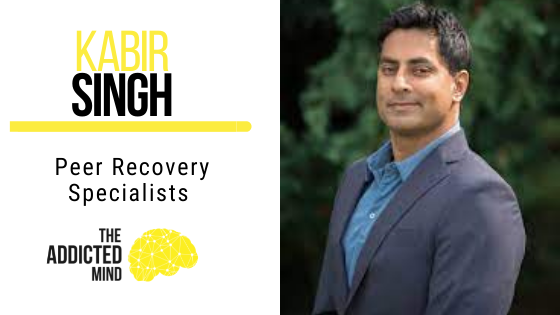People going through addiction recovery deal with feelings of shame, guilt, and unworthiness that no one else can understand unless they’ve gone through a similar situation. However, if someone comes to them at their level, they can automatically pull some of that shame away.
This is where peer specialists can help people through addiction treatment and recovery. They encourage the patient and create an environment of safety. The patient feels validated and begins to believe that they’re enough. People heal when there is that element of human connection.
Kabir Singh, a certified peer recovery specialist in Maryland, shares his experience of healing and giving back to the community through peer intervention.
Who Can Become a Certified Peer Specialist?
In 2013, Maryland introduced the certified peer recovery specialist (CPRS). In other areas, they’re called recovery coaches and peer specialists among other things. It’s a training program open to really anyone interested in supporting others.
You don’t have to have a college degree. You do not have to be a person in recovery. You can be what’s considered an ally to recovery. There’s no age requirement. You just need a GED, about 48 hours of class time, 500 hours of fieldwork, and some 25 hours of supervision. Then you have to pass a state exam to become a certified peer.
Currently, certified peers can also be found in the emergency rooms across the nation as part of the triage team.
What Do Peer Recovery Specialists Do?
As a peer, you begin to get involved with groups at homeless shelters. Unlike in a treatment setting where you have a counselor or clinician running a group, everyone is a peer in a peer group.
For instance, a certain peer is assigned to run the group for a particular day and come up with an idea of what they’re going to talk about. Then another takes on the position the following week. Their goal is to provide purpose, meaning, and value to the participants.
Creating an Environment of Safety and Equality
In a peer group, you’re all on the same level. This removes some of the barriers that you would otherwise have in counseling or a therapy session. Peers are encouraged to engage and come in as their equal.
When you have a therapist, there is that unspoken hierarchical structure that keeps the client from being more open. However, in peer intervention, you’re equal with each other, working together, and sharing your experiences. You’re all coming in as human beings.
If you want to learn more about becoming a certified peer recovery specialist, check out Episode 132: Peer Recovery Specialists with Kabir Singh.

